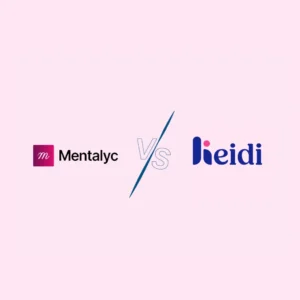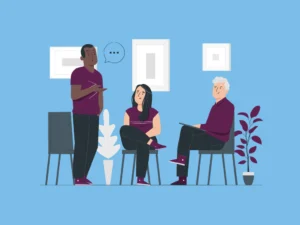The foundation of effective therapy rests on the connection formed between the person seeking help and their counselor. Well before modern therapy evolved into structured methods and specialized approaches, Carl Rogers’ core conditions introduced a revolutionary concept that true healing starts with authentic human connection rather than clinical assessment or direction.
His perspective, grounded in understanding and dignity, proposes that individuals thrive when genuinely acknowledged, listened to, and embraced for who they are. Rogers believed counsellors didn’t need to repair clients; rather , he had faith in people’s natural ability to heal themselves. This conviction formed the basis for what he called the three “core conditions” crucial for meaningful personal change. These qualities aren’t merely techniques—they represent a fundamental approach to therapeutic relationships.
What Are Carl Rogers’ Core Conditions?
Therapy works best when you feel safe, when your therapist is real with you, and when you’re not judged for anything you say. It’s kind of like having a good friend who listens without interrupting, accepts you no matter what, and doesn’t try to fix you—just helps you understand yourself better. These aren’t fancy tools, they’re basic human qualities we all need to feel okay.
Carl Rogers (1902-1987) stood out as a pivotal figure in humanistic psychology. He emerged at a time when psychoanalysis and behaviourism dominated the field. While his contemporaries dug through unconscious conflicts or focused solely on observable behaviors, Rogers took a different path. He believed people had inherent worth and could grow naturally given the right environment.
His approach was revolutionizing as:
- Put the relationship between therapist and client front and center, rather than technical methods
- Cared more about how clients experienced their world than clinical labels
- Championed people’s freedom to chart their own course and find meaning
This way of thinking matched broader humanistic values – empathy, respect, being real with each other, and believing in growth. Rogers pushed back against the medical model that saw people as broken machines needing repair. Instead, he saw them as capable beings who could find their own answers with proper support.
Carl Rogers’ Person-Centered Therapy (PCT) changed the way therapy works by making clients, not therapists, the main drivers of their healing. PCT believes that people are capable of finding their own solutions. The therapist’s role is not to fix things, but to be there, creating a safe space where clients can explore their thoughts and feelings openly.
To do this well, Rogers said three things really matter: empathy, being real (he called it congruence), and offering care without judgment (unconditional positive regard). These aren’t tips or tricks – they’re a way of showing up with trust in the person across from you. When a therapist brings these into the room, it can completely change how healing happens.

The Core Conditions in Practice
Here’s how these ideas work in practice:
- Empathy: Trying to understand what the client is going through by seeing things from their perspective.
- Congruence: Being genuine and transparent instead of hiding behind a professional mask.
- Unconditional Positive Regard: Accepting the client fully, without conditions, no matter what they bring into the space.
Rather than relying on specific techniques or methods, these principles focus on being present with clients, building a strong, trusting relationship. Even though they come from Person-Centered Therapy, these ideas are helpful in all kinds of therapy, from trauma healing to CBT and DBT. They form the foundation of the therapeutic connection that research shows leads to better outcomes.
Empathy
Empathy is kind of like trying on someone else’s shoes for a while. You don’t become them, but you get a feel for where they’ve walked and what that’s been like. When you step back into your own shoes, you can tell them what it felt like – and they feel seen and understood. This is not because you fixed anything, but because you really tried to understand their point of view.
In the therapy room, that means getting close to how the client feels without losing your grounding. It’s not just about nodding or repeating their words but it is about being emotionally present.
As therapists we try not just just listen to what they’re saying. We tune in to the deeper layers and let them know we are really there with them, even in the hard stuff.
Why Empathy Makes a Difference
Empathy works in several crucial ways:
- It builds trust and safety, especially for folks carrying trauma
- It validates experiences, often letting people put words to feelings for the first time
- It supports emotional regulation through human connection
- It shows clients how to develop self-empathy
Example
Sarah, 29, a teacher, starts therapy after her long-term relationship falls apart. “I feel like I wasn’t enough,” she says quietly. “Like no matter what I did, it never really mattered.”
A therapist practicing empathy might say:
“Sounds like you kept trying to be what your partner needed, and when that still wasn’t enough, it left you feeling worthless and defeated. That’s got to cut really deep.”
This kind of reflection helps clear emotional fog, eases guilt, and builds self-awareness. Sarah feels not just heard but understood at a deeper level.
Congruence
Congruence is like clear water in a glass. What you see is what you get. There are no hidden ingredients, no artificial colours or flavours. Just like we trust clear water more than murky water, clients trust therapists who are transparent and genuine. The therapist doesn’t pretend to be perfect but show up as a real person with real responses, making it safe for clients to be equally real.
Congruence means the therapist shows up as a real person. They don’t hide behind professional jargon or distant expertise. They’re straight with clients about their thoughts and feelings when it serves the healing process.
This doesn’t mean dumping personal issues on clients or reacting to everything emotionally. It means bringing your authentic self while maintaining professional boundaries.
Why Being Real Matters
Congruence:
- Builds trust through authenticity
- Shows what emotional honesty looks like
- Levels the playing field between therapist and client
- Keeps therapists honest about their reactions
Congruence lets clients meet a real human being, not just someone playing a role. This human connection often gives clients permission to be more authentic themselves.
Example
Aman, 40, a businessman who tends to stay in his head, delivers a long, detailed analysis of his week. Then he shrugs: “Anyway, I guess that’s not really important.”
A congruent therapist might share:
“I noticed something interesting just now – I felt us drifting away from something that might actually matter to you. Did you feel that distance too?”
This isn’t about the therapist’s needs – it’s using their own inner compass to invite deeper connection. This kind of realness helps clients spot their own patterns and access more vulnerable truths.
Unconditional Positive Regard
Unconditional positive regard is like a comfortable chair that supports you completely, no matter your shape, size, or how you choose to sit. You don’t have to earn the right to rest there or worry about being rejected if you shift your weight. The chair holds you exactly as you are. In this space of complete acceptance, you can gradually relax, let your guard down, and begin to explore parts of yourself you’ve kept hidden, knowing you won’t be pushed away regardless of what emerges.
Unconditional Positive Regard (UPR) means consistent acceptance of the client, no strings attached, regardless of what they say, think, feel, or do. It means valuing the person even when you don’t agree with their choices. UPR doesn’t mean approving harmful behaviour. Rather, it separates the person’s worth from their actions, offering clients the experience of being valued simply for existing.
Why Unconditional Acceptance Transforms
Unconditional Positive Regard:
- Helps counteract the inner critic and shame
- Creates emotional safety for honest sharing
- Lets clients explore without fear of judgment
- Reinforces their inherent worthiness
UPR can be especially healing for people who’ve only known love with conditions, judgment, or emotional neglect. Being accepted simply for who you are can change everything.
UPR Example
Maya, 22, a college student, confesses through tears that she’s been using substances to numb her anxiety. “You probably think I’m weak or disgusting for doing this.”
The therapist responds:
“Actually, what I see is someone trying her best to handle something incredibly overwhelming. You’re not disgusting – you’re human, and you deserve support, not shame.”
This response helps chip away at Maya’s self-judgment and opens space for honest exploration. Over time, this atmosphere of acceptance can help her find self-acceptance too.
How These Conditions Create Change
When therapists consistently offer empathy, congruence, and unconditional positive regard, several powerful things happen:
- Safety and Trust: Clients feel secure enough to face painful emotions and experiences
- Self-Awareness: Through reflection and real dialogue, clients see themselves more clearly
- Self-Acceptance: Experiencing acceptance from another person helps clients accept themselves, reducing shame and building self-worth
- Emotional Regulation: The therapist’s steady presence helps clients develop their own ability to regulate emotions
- Empowerment: Clients discover their own answers, building confidence and independence
These conditions create fertile ground for growth – not by fixing clients’ problems but by awakening their natural capacity for healing and change. Rogers believed that given the right conditions, psychological growth happens as naturally as a plant growing toward light. People move toward wholeness, integration, and authenticity when they have the right relational environment.
Conclusion
Carl Rogers’ core conditions – empathy, congruence, and unconditional positive regard – remain deeply relevant in today’s therapeutic world. While newer modalities have definitely added useful techniques, structure, and neuroscience, the fundamentals of healing still largely reside in the quality of the therapeutic relationship.
For mental health professionals, the core conditions are not just principles to be applied – they are ways of being. They call upon therapists to cultivate deep presence, emotional honesty, and an unwavering belief in the client’s capacity for growth.
In a world where many clients come to therapy feeling broken, unworthy, or invisible, offering these three conditions can be a radical act of human connection—and often, the most healing one.
Resources
https://www.sparta-health.co.uk/carl-rogers-core-conditions-for-therapy
https://www.torbaypsychotherapy.com/article/three-core-conditions
Why other mental health professionals love Mentalyc

“Do yourself a favor, make your life easier. Use the tools that are readily available … I found Mentalyc to be one of the best tools that I’ve ever used.”
Licensed Marriage and Family Therapist

“For those who have hesitations … It is a lifesaver. It will change your life and you have more time to be present with your patients.”
Licensed Clinical Social Worker

“It immediately changed my quality of life, personally and professionally. I went from 3–4 hours a week of notes to 1 hour at most … that alone is invaluable personally and professionally.”
Owner/Independently Licensed Marriage & Family Therapist (IMFT)

“If I were recommending this software to a colleague, I would tell them that it is the best thing that they could do for their practice.”
Licensed Professional Counselor






